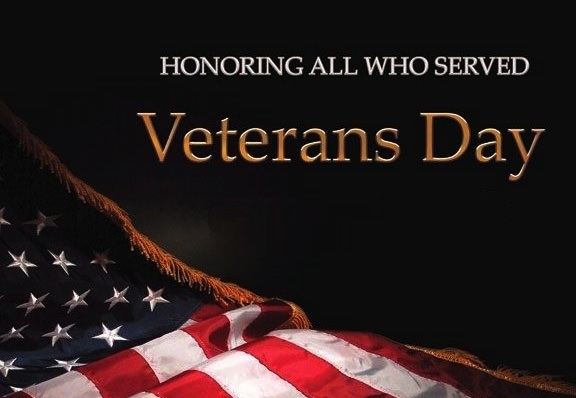 Veterans Day - 11/11
Veterans Day - 11/11

In November 1919, President Wilson proclaimed November 11 as the first commemoration of 'Armistice Day' with the
following words: "To us in America, the reflections of Armistice Day will be filled with solemn pride in the
heroism of those who died in the country's service and with gratitude for the victory, both because of the
thing from which it has freed us and because of the opportunity it has given America to show her sympathy
with peace and justice in the councils of the nations . . ."
The original concept for the celebration was for a day observed with parades and public meetings and a brief
suspension of business beginning at 11:00 a.m.
The United States Congress officially recognized the end of World War I when it passed a concurrent
resolution on June 4, 1926, with these words:
Whereas the 11th of November 1918, marked the cessation of the most destructive, sanguinary, and far
reaching war in human annals and the resumption by the people of the United States of peaceful
relations with other nations, which we hope may never again be severed, and
Whereas it is fitting that the recurring anniversary of this date should be commemorated with thanksgiving
and prayer and exercises designed to perpetuate peace through good will and mutual understanding between
nations; and
Whereas the legislatures of twenty-seven of our States have already declared November 11 to be a legal
holiday: Therefore be it Resolved by the Senate (the House of Representatives concurring), that the
President of the United States is requested to issue a proclamation calling upon the officials to display
the flag of the United States on all Government buildings on November 11 and inviting the people of the
United States to observe the day in schools and churches, or other suitable places, with appropriate
ceremonies of friendly relations with all other peoples.
An Act (52 Stat. 351; 5 U. S. Code, Sec. 87a) approved May 13, 1938, made the 11th of November in each
year a legal holiday to be dedicated to the cause of world peace and to be thereafter celebrated
and known as "Armistice Day." Armistice Day was primarily a day set aside to honor veterans of
World War I, but in 1954, after World War II had required the greatest mobilization of soldiers,
sailors, Marines and airmen in the Nation's history; after American forces had fought aggression
in Korea, the 83rd Congress, at the urging of the veterans service organizations, amended the
Act of 1938 by striking out the word "Armistice" and inserting in its place the word "Veterans."
With the approval of this legislation (Public Law 380) on June 1, 1954, November 11th became a
day to honor American Veterans of all wars.
On October 8, 1954, President Dwight D. Eisenhower issued the first "Veterans Day
Proclamation" which stated:
"In order to insure proper and widespread observance of this anniversary,
all veterans, all veterans' organizations, and the entire citizenry will wish to join hands in the
common purpose. Toward this end, I am designating the Administrator of Veterans' Affairs as Chairman
of a Veterans Day National Committee, which shall include such other persons as the Chairman may
select, and which will coordinate at the national level necessary planning for the observance. I
am also requesting the heads of all departments and agencies of the Executive branch of the
Government to assist the National Committee in every way possible."
The Veterans Day National Ceremony is held each year on November 11th at Arlington National Cemetery.
The ceremony commences precisely at 11:00 a.m. with a wreath laying at the Tomb of the Unknowns and
continues inside the Memorial Amphitheater with a parade of colors by veterans' organizations and
remarks from dignitaries. The ceremony is intended to honor and thank all who served in the United
States Armed Forces.
God Bless America and God Bless Our Veterans
 Veterans Day - 11/11
Veterans Day - 11/11

 Veterans Day - 11/11
Veterans Day - 11/11

